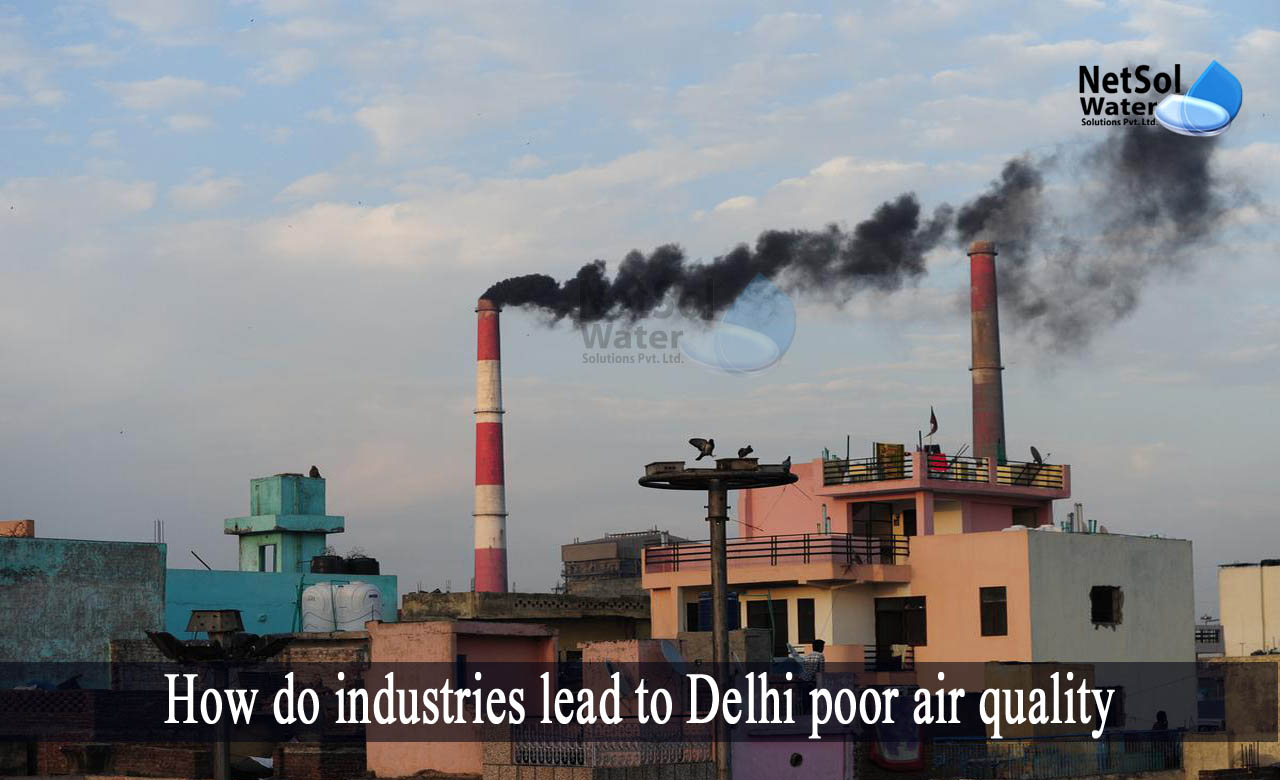The amount of air pollution brought on by the release of gases, smoke, and dust particles, into the atmosphere is excessive in Delhi.
Air pollution is the fore-runner of acid rain and photochemical smog, which are the main causes of lung cancer, asthmatic issues, stratospheric ozone loss, and global warming. Air pollution is also an inescapable by-product of the current industrial economy, which cannot be totally removed, but effective steps can lessen it.
Let’s understand how industries lead to Delhi’s poor air quality.
How do industries lead to Delhi poor air quality?
Industrial processes release large volumes of chemicals, hydrocarbons, and organic compounds into the air. The air's greenhouse effect is caused by an excessive amount of carbon dioxide.
Because, greenhouse gases absorb infrared light from the planet's surface, their existence benefits the environment. Inadequate levels of these gases and particulate matter (PM) in the atmosphere, is to blame for the recent climate change.
Contribution of greenhouse gases in global warming in Delhi
Since, each greenhouse gas has distinct physical and chemical characteristics, molecular weights, and atmospheric lifetimes, they each contribute to global warming in a different way.
A straightforward working method can be used to determine the relative contribution, of the unit emissions of each gas to the total CO2 unit emissions, over a predetermined time period. As a result, the warming effect of any greenhouse gas relative to CO2 over a specific time period, can be characterised as global warming potential (GWP).
Sources of greenhouse gas emissions in Delhi
Climate change has been accompanied by a rise in greenhouse gases, which is the result of greenhouse gas emissions from many sources. The global problem of greenhouse gas emissions, which alters the climate, has a negative influence on human and natural resource development, as well as economic progress.
The principal greenhouse gases (GHGs) and their relative concentrations are methane (4–9%), nitrous oxide (3–7%), water vapour (H2O), and carbon dioxide (9–26%, respectively).
CO2 and CH4 are the two greenhouse gases that have the greatest impact on rising global surface temperatures. These gases are released both naturally and by humans. Methane is the second gas to contribute to global warming after carbon dioxide. Methane's global warming potential (GWP) is 21–25 times greater than that of carbon dioxide, making it a more potent greenhouse gas with greater effects.
How to reduce air pollution from factories?
To remain operational, production facilities and other businesses must adhere to strict EPA regulations. Due to their awareness of the potential harm that air pollution may cause, many factory managers and business owners concentrate on reducing it.
The following are the two most typical approaches for businesses to cut their emissions of air pollution:
1) Improving factory performance: The quantity of pollution that a plant produces often decreases, as activities become greener and more energy-efficient.
2) Businesses can streamline several aspects of their operations to conserve energy, lowering the facility's overall emissions in the process.
Destroying pollutants before they enter the atmosphere!
Additionally, industrial managers can use abatement techniques to eliminate VOCs, HAPs, and other pollutants before they pollute Delhi’s air quality. To select the best abatement method for your operation, you must examine your operation because different abatement methods are effective, for different types of pollutants.
Four of the most commonly used abatement techniques include:
1. Regenerative Thermal Oxidizer
Regenerative thermal oxidizers, also referred to as RTOs, use high temperatures to burn off contaminants before releasing them into the environment. When possible, the abatement procedure, which makes use of a network of high-efficiency heat exchangers, uses the energy from the industrial operation itself.
2. Recuperative Thermal Oxidizer
Recuperative thermal oxidizers, or RTOs for short, use high temperatures and robust steel heat exchangers, to burn up VOCs before they are released into the air.
3. Catalytic Oxidizer
To convert pollutants into safe molecules, catalytic oxidizers combine chemical catalysts with high temperatures.
4. Oxidizers with Rotary Concentrators
In facilities for chemical processing, surface painting, and wood finishing, to name a few, rotary concentrators and oxidizers are ideal.
How can we assist?
Netsol Water is dedicated to offering practical solutions for air pollution management, thus, safeguarding the world's most valuable resource, the air. We provide biofilters, scrubbers, incinerators, and many more to control air pollution in Delhi, and other cities of India.
Netsol Water is Greater Noida-based leading water & wastewater treatment plant manufacturer. We are industry's most demanding company based on client review and work quality. We are known as best commercial RO plant manufacturers, industrial RO plant manufacturer, sewage treatment plant manufacturer, Water Softener Plant Manufacturers and effluent treatment plant manufacturers. Apart from this 24x7 customer support is our USP. Call on +91-9650608473, or write us at enquiry@netsolwater.com for any support, inquiry or product-purchase related query.



